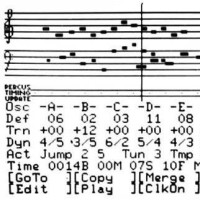00:00:20.480
All right, hi everyone. My name is Craig.
00:00:21.920
I work at Heroku, specifically on the Heroku Postgres team.
00:00:24.119
Before I get started, I have a quick question: show of hands, how many here use Postgres already?
00:00:30.160
Awesome! And who does not use it at all?
00:00:31.840
Okay, okay! Hopefully, I can convince a few people by the time we're done.
00:00:38.719
Before diving in, here are some quick PSAs.
00:00:43.239
If you're on a Mac, which most people are in this room, check out Postgres.app if you're not already using it.
00:00:47.760
It's a more native way to use Postgres; it just works seamlessly like most things on a Mac.
00:00:55.160
Another resource is Postgres Weekly, a good weekly newsletter if you’re into Postgres.
00:01:02.719
Lastly, if you're already running Postgres and it's exposed to the internet and you weren't busy upgrading your database yesterday, please go do that now. It is the worst vulnerability they've had in six or seven years, including an escalation of privileges, a remote code execution, and a permanent denial of service.
00:01:11.240
This could be quite serious if your database is publicly facing, so go update if you haven't already.
00:01:17.040
So, the agenda today includes a brief history of Postgres and the project itself. We'll also discuss developing with Postgres, understanding performance—which is usually a black box for most application developers—and some querying techniques.
00:01:36.640
First off, it's Postgres or PostgresQL, not P-O-S-T-R or P-O-S-T-R QL. This is Tom Lane, who created or collaborated on the development of Tiff, JPEG, and PNG formats. He is also the primary contributor to Postgres.
00:02:02.240
Here's a mail from about eight years ago where he mentioned that renaming the project was probably the worst decision we made. Postgres has been around for a long time, with most considering its origin to be around 1995, coming out of Ingress, which shares roots with Oracle.
00:02:13.319
I'm not sure if that association is good or bad, but it's very different in that it's completely community-owned and driven. No one person can ever own Postgres, which ensures its longevity. If a company goes bankrupt, it cannot be acquired; it will always be community-owned and driven.
00:02:30.840
This aspect contributes significantly to its momentum. A key concept in Postgres is MVCC, or Multiversion Concurrency Control. It allows other users to read data while a transaction is being processed without waiting for locks, which is beneficial for performance and user experience.
00:03:01.600
A quote from a coworker describes Postgres as the 'Emacs of databases.' He suggests that it acts as a platform to build upon, giving users the ability to add extensions and functionalities beyond just storing text and numbers.
00:03:34.200
Now, developing with Postgres can be greatly enhanced with tools such as psql, which is your friend. If you don't use it, you should. Psql allows you to describe tables, query easily, and it can open your default editor, making it a robust query editor.
00:03:59.879
Postgres has a unique approach to data types, offering more than just the obvious numeric types. For example, it includes support for things like IP and MAC addresses, shapes for basic geospatial calculations, and arrays.
00:04:56.600
Using arrays inside your database can eliminate the need to join against other tables for simple use cases like tagging blog posts. Inserting and querying arrays is straightforward, allowing for easy data manipulation.
00:05:22.480
Range types are another newer feature introduced in Postgres 9.2. This is particularly useful for applications that require a classification based on a start and end, such as calendar events or appointment slots.
00:06:19.680
By adding exclusion constraints on these types, Postgres can automatically enforce data integrity, preventing issues such as overbooking in a classroom or conference room.
00:06:53.160
Beyond basic data types, Postgres is a powerful platform with a range of extensions available, significantly expanding its functionality. Extensions introduced in version 9.4 enabled applications to leverage additional capabilities easily.
00:07:38.440
For example, the case-insensitive text type (CITEXT) can help users migrating from MySQL. Users often appreciate discovering tools like Hstore, which enables users to integrate key-value store functionality within their databases, adding a flexible, NoSQL-like capability.
00:07:59.399
Postgres 9.2 also introduced a native JSON data type, allowing users to validate data formats directly in the database, making it easier to manage semi-structured data.
00:08:50.240
For those familiar with JavaScript, the embedded V8 engine opens up exciting possibilities for manipulating data within SQL queries, but caution is advised against running arbitrary scripts.
00:09:08.680
Postgres supports full-text search out-of-the-box, which is highly useful for applications that need robust text search capabilities. There are various extensions available to extend full-text features, including those focusing on geospatial data.
00:09:59.800
Now, let's discuss performance. How many of you are familiar with sequential scans and index scans? Very few. The general idea is that sequential scans are often assumed bad, but they are not always detrimental depending on the data workload.
00:10:43.680
Postgres has a variety of index types available, each tailored for different use cases, such as B-tree, GIST, KNN, and SP-GIST. Understanding the use cases for these indexes is crucial for optimizing database performance.
00:11:00.839
To grasp the performance of your queries, utilizing the EXPLAIN command is extremely helpful. It allows developers to see how queries will be executed, showing estimated times and the expected number of rows returned.
00:11:45.240
By analyzing the EXPLAIN output and using the EXPLAIN ANALYZE command, you can understand how your query performed in real-time versus the prediction it made, allowing for better adjustments and optimizations.
00:12:38.640
When designing a web application, common query times should ideally be around 10 milliseconds, with rare queries remaining below 100 milliseconds for an effective user experience.
00:13:00.240
Adding indexes to critical fields like salary will help optimize queries significantly. For example, using indexed scans improves efficiency from sequential scans dramatically, demonstrating the importance of strategically placing indexes.
00:14:12.439
Creating indexes concurrently is recommended to maintain table availability during index creation. Conditional indexes also come in handy when only a subset of your data is of importance.
00:15:01.920
While wildcard queries can be detrimental, full-text search queries have some distinct optimizing features in Postgres. Extensions like PG RoRocks and PG Stat Statement can be powerful tools for monitoring and maintaining performance.
00:15:54.760
As we dive into querying, window functions are a powerful feature allowing users to aggregate and filter results on specific subsets of data efficiently.
00:16:57.120
You'll often find that when performing operations to retrieve data, tools like CTEs (Common Table Expressions) enhance readability and usability of SQL queries.
00:17:51.280
For handling data at scale, Postgres's HyperLogLog extension enables efficient storage of unique values while maintaining a small memory footprint. This functionality combined with Postgres’s diverse set of extensions provides an avenue for tackling big data challenges.
00:18:37.679
Other extensions such as LISTEN and NOTIFY provide a publish/subscribe system in your database, allowing for efficient communication between applications and the database.
00:19:20.479
Reflecting on the evolution of Postgres, we see that the community is growing along with strong momentum. Features are continuously being added, enhancing extensibility, flexibility, and support for JSON and Big Data.
00:20:04.359
The foundation is being laid for future innovations, making Postgres a worthy database choice for numerous applications. Thank you for listening!












































